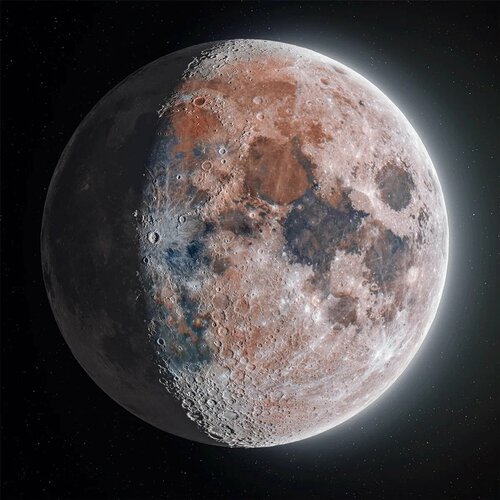Abstract
Planet 9 is an hypothetical object in the outer Solar system, which is as yet undiscovered. It has been speculated that it may be a terrestrial planet or gas/ice giant, or perhaps even a primordial black hole (or dark matter condensate). State-of-the-art models indicate that the semimajor axis of Planet 9 is ∼400 AU. If the location of Planet 9 were to be confirmed and pinpointed in the future, this object constitutes an interesting target for a future space mission to characterize it further. In this paper, we describe various mission architectures for reaching Planet 9 based on a combination of chemical propulsion and flyby maneuvers, as well as more advanced options (with a ∼100 kg spacecraft payload) such as nuclear thermal propulsion (NTP) and laser sails. The ensuing mission duration for solid chemical propellant ranges from 45 years to 75 years, depending on the distance from the Sun for the Solar Oberth maneuver. NTP can achieve flight times of about 40 years with only a Jupiter Oberth maneuver whereas, in contrast, laser sails might engender timescales as little as 7 years. We conclude that Planet 9 is close to the transition point where chemical propulsion approaches its performance limits, and alternative advanced propulsion systems (e.g., NTP and laser sails) apparently become more attractive.
Planet 9 is an hypothetical object in the outer Solar system, which is as yet undiscovered. It has been speculated that it may be a terrestrial planet or gas/ice giant, or perhaps even a primordial black hole (or dark matter condensate). State-of-the-art models indicate that the semimajor axis...

arxiv.org
When I see the bit about a primordial black hole I am always reminded of a story form one of the Niven and Pournelle books.
Pluto was a puzzler, however. An object six times Earth's mass was expected to show a disk when observed using large telescopes, but Pluto did not. Furthermore, the planet had a bizarre tilted orbit that partly overlapped that of Neptune.
As astronomers continued their observations of Pluto, they revised estimates of its size downward. By 1960, some astronomers thought that it was about the size of Earth; others thought it might be as small as Mercury. This only increased the mystery surrounding the planet, for if it was to account for the observed discrepancies in Neptune's orbit, then it had to be several times as massive as Earth. Some astronomers proposed the existence of another, larger planet beyond Pluto. One scientist proposed a much more novel explanation.
George Peterson Field was the pen name of Dr. Robert Forward. Safely hidden behind the protective cloak of his nom de plume, the newly minted Ph.D. physicist speculated in a "science fact" article in the December 1962 issue of Galaxy science fiction magazine that Pluto was a gift from a "Galactic Federation."
He began by calculating that a body about the size of Mercury but with six times the mass of Earth would be so dense that it would have to be made of the collapsed matter found only in certain dwarf stars. Such an object could not exist naturally; unrestrained by the massive gravity of a dwarf star, it should have exploded long ago. Therefore, Forward asserted, Pluto must be artificial.
He suggested that Pluto was in fact a "gravity catapult." He wrote that "it would have to be whirling in space like a gigantic, fat smoke ring, constantly turning from inside out." A spacecraft that approached the ring's center moving in the direction of its spin would be dragged through "under terrific acceleration" and ejected from the other side.
If the acceleration the ultradense smoke ring gave the spacecraft were about 1000 times the acceleration Earth's gravity imparts to falling objects, then the ring would boost the spacecraft to nearly the speed of light in about one minute. The passengers and crew would, however, feel nothing as their spacecraft accelerated, for the gravitational force from the roiling ring would act on every atom of it uniformly. The ring would slow by a small amount as it accelerated the spacecraft.
Forward wrote that a "network of these devices in orbit around interesting stars" would provide "an advanced race" with an "energetically economical" means of star travel. The rings in the network would "cartwheel slowly" so that over time they would point at many possible destination stars.
A spacecraft accelerated by a ring could, upon arriving at another star in the network, enter that star's ring moving against the ring's spin. This would decelerate the spacecraft very rapidly and increase the ring's spin by a tiny amount. In effect, the spacecraft would pay back the network for the acceleration it borrowed when it began its journey.
Forward ended his article by noting that such a device could be shot through space by a larger gravity catapult and braked "by pushing against a massive planet," such as Neptune. This, he added, might account for Pluto's odd orbit with respect to the eighth planet. He speculated that, at some time in the past, the Galactic Federation had noted the rise of humans and had launched Pluto toward Sol to serve as "a coming out present."
Forward's concept is so imaginative and appealing that it ought to be true. New data on Pluto soon ruled it out, however. In 1977, James Christy of the U.S. Naval Observatory Western Station, located just a few kilometers from Lowell Observatory in Flagstaff, Arizona, found Pluto's moon Charon. The discovery of a body orbiting Pluto enabled astronomers to calculate its mass accurately for the first time. Pluto, as it turned out, has only one-quarter of 1% of Earth's mass. Subsequently, it was found to have a diameter of only about 2350 kilometers, making it only two-thirds as large as Earth's moon. After the turn of the 21st century, Pluto was found to have four more moons, all smaller than Charon.
Though Pluto did not turn out to be a link in a galactic transportation network, it did turn out to be a link to something big. Pluto was the first member of the Kuiper Belt to be found. The Kuiper Belt, a part of the Solar System long theorized but only confirmed beginning in 1992, is the "third realm" of bodies orbiting the Sun after the Sun-hugging realm of the rocky planets and the realm of the giant planets. It is far bigger than the first two realms combined. As New Horizons closes in on Pluto, we know of over 1000 bodies in trans-Neptunian space. Astronomers estimate that more than 100 times that number might exist. Assuming that New Horizons continues to operate as planned, mission planners expect to direct it past several more Kuiper Belt Objects after the Pluto flyby.
If Pluto is so small that it cannot account for the discrepancies in Neptune's orbit, then what does? In August 1989, the Voyager 2 spacecraft flew past Neptune. By carefully tracking the robot spacecraft, celestial dynamicists refined their estimate of Neptune's mass. When they did, the observed discrepancies in its orbital motion vanished. There was thus never a need to find a Planet X. Error had led to coincidence, and the result was mysterious Pluto.

 phys.org
phys.org




























